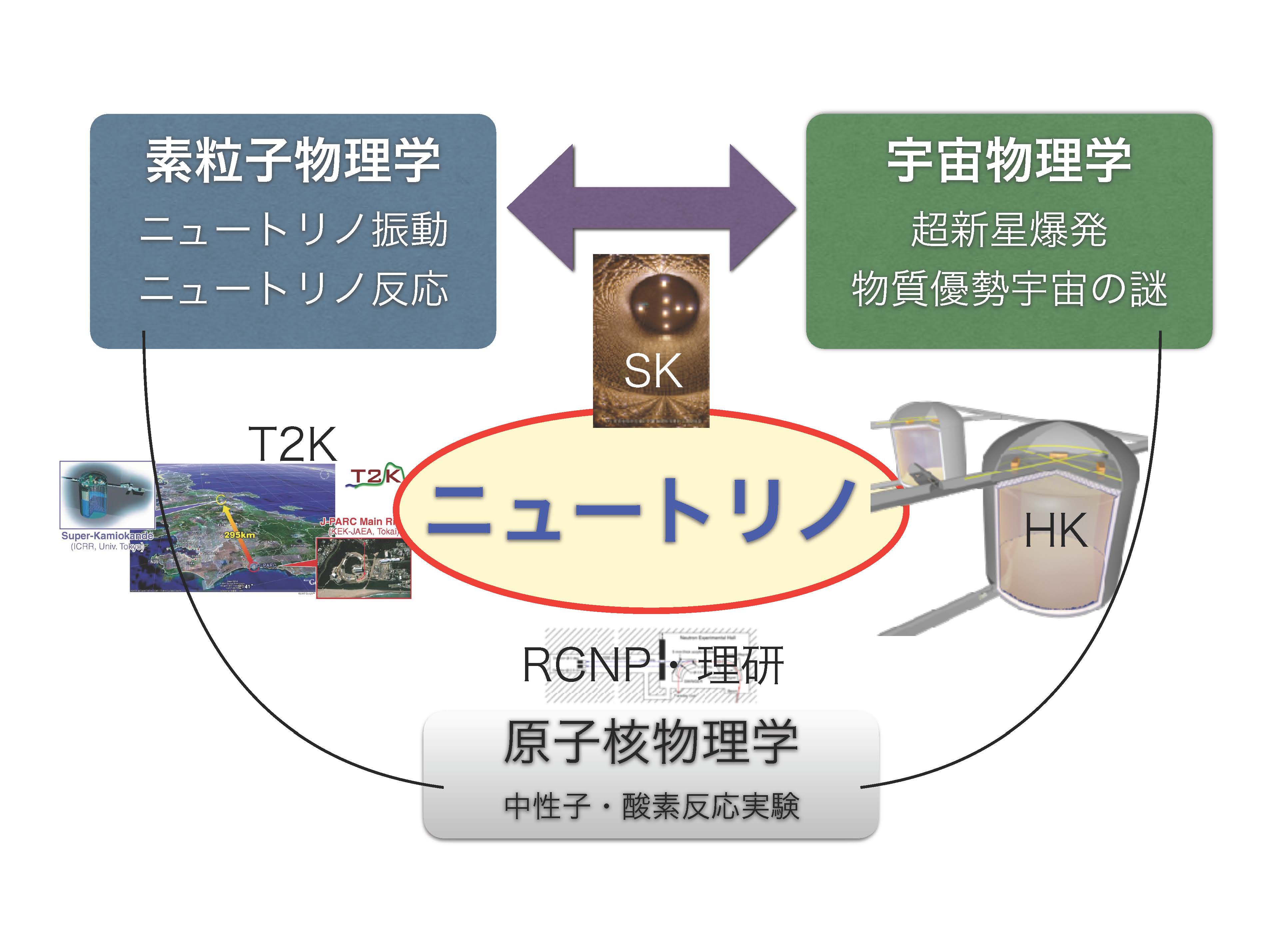High Energy Physics

Particle physics is the study of the properties of elementary particles, which are the smallest units that make up matter, and the forces (interactions) that connect them. Particle physics is also closely connected to understanding the universe. Our laboratory promotes experimental research through accelerator experiments and astrophysical observations. In particular, we focus on particles called neutrinos and are trying to elucidate their properties and the mysteries of the universe through a variety of experiments.
 |
|
|---|
Super-Kamiokande, winner of the 2015 Nobel Prize in Physics, is famous for its discovery of neutrino masses, but it is also capable of observing cosmic neutrinos. Our laboratory aims to observe neutrinos emitted from supernova explosions that occur at the end of a star’s life. On the other hand, neutrinos are still mysterious elementary particles, and we are also promoting T2K experiments using artificially generated neutrino beams at J-PARC in Tokai, Ibaraki Prefecture, Japan, in order to elucidate the nature of neutrinos.
Furthermore, the Hyper-Kamiokande, a future experiment scheduled to begin in 2027, is about 10 times larger than the Super-Kamiokande and aims to elucidate the mysteries of the universe, where matter is predominant and antimatter is almost non-existent.



